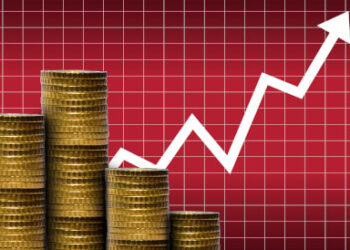In a statement released by the RBA following its decision to raise the policy rate by 25 basis points to 3.6 per cent, Dr Lowe signalled a “more flexible approach” to future rate increases.
Despite this, however, Mr Miller believes that the rate will need to reach a “4 handle” to adequately tackle inflation. However, he assessed that Dr Lowe’s approach gives him the flexibility to go to a “4 handle” if deemed necessary, such as in the event of a significant weakening of the labour market or a more substantial deceleration in price and wage data than initially anticipated. Alternatively, more moderate increases or a “pause” could also be considered.
Mr Miller cited some modestly softer labour market data, softer official wage data, and indications from the monthly consumer price index (CPI) that inflation pressures may have peaked.
“However, in my view, it is not clear that inflation has peaked in the sense that a meaningful turning point is imminent,” he cautioned.
Furthermore, Mr Miller assed that after inflation appeared to turn down toward the end of 2022 in both the US and Europe, progress since has been somewhat more tempered than had been expected.
“My view that a ‘4 handle’ is required is a little above what is currently reflected in market pricing leading to a belief on my part that interest rate markets in Australia are setting themselves up for a negative (upside) surprise,” Mr Miller warned.
Moreover, he assessed that key domestic data points for the April meeting include the March NAB Monthly Business Survey, February Labour force data, February Retail trade data, and the monthly CPI indicator.
Of these, the March quarter CPI, to be released on 26 April, will be the most critical, Mr Miller stated, and added that there needs to be a significant turning point in the annual trimmed mean inflation, approaching 6.5 per cent or lower, to justify no change in the policy rate from the current level.
“Annual rates of inflation above 7 per cent would mean further rate rises remain on the agenda. An appreciable step-down in the annual rate of inflation to something with a ‘6 handle’ from the current 7.4 per cent would add to pressure for a ‘pause’ in the policy rate,” he said.
Turning to the US, Mr Miller also noted that the US Federal Reserve’s chair, Jerome Powell, is seeking similar “wiggle room” due to price and labour market data surprising on the upside.
Although the US measures of inflation are below those in Australia, Miller suggests that the question of whether the Fed decides on a 25 bp or 50 bp increment at the FOMC meeting that concludes on 21–22 March remains an open question. The all-important February non-farm payrolls report and the February consumer price index (CPI) will also be critical data points to be negotiated prior to that meeting.







